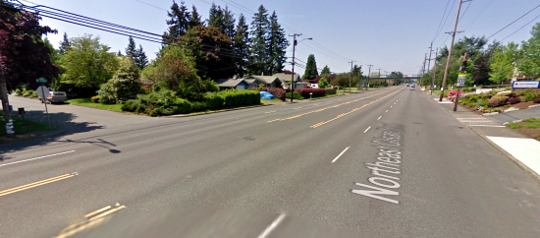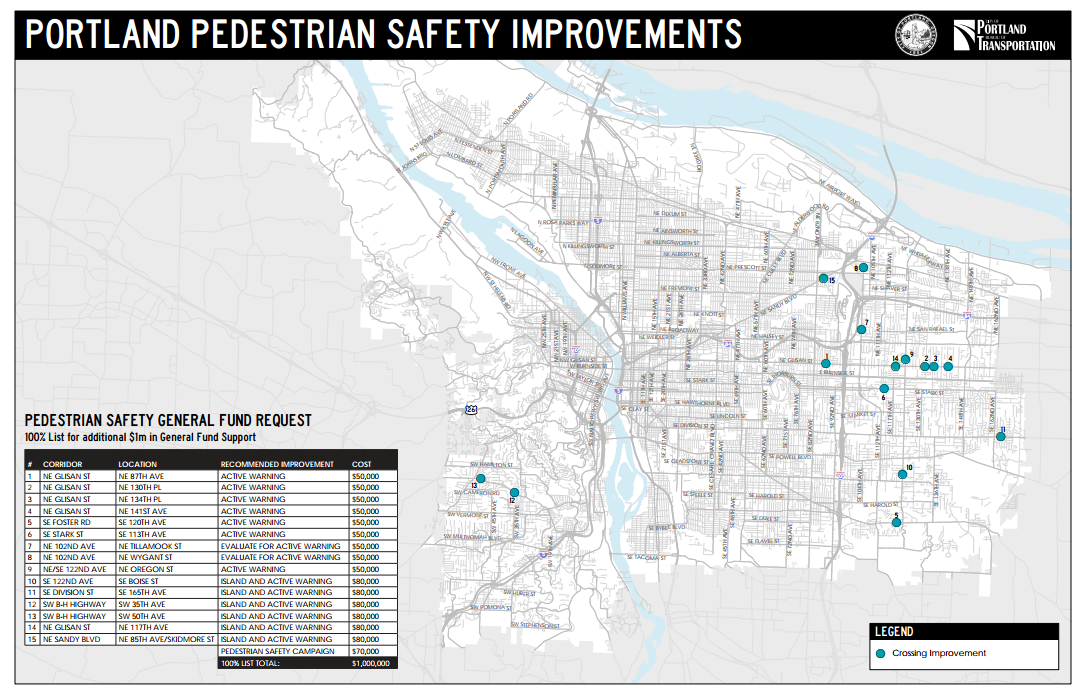The City of Portland’s general fund has a few million dollars to spare, and Commissioner Steve Novick is mounting an unusual campaign to spend some of it on safer street crossings.
In a city where you’re twice as likely to die from traffic as from homicide, Novick and other backers say making roads safer is the most cost-effective way to improve public safety.
In an interview Friday, Novick called out a few police operations in particular as having lower returns on investment.
“Maintaining an excessive number of command staff isn’t as essential to public safety as having safer intersections.”
— Steve Novick, City Commissioner of Transportation
“To the extent that what they’re doing is chasing down drug dealers who are just going to be replaced by other drug dealers, that’s not a good use of public safety funds,” he said. “I think investing in pedestrian safety is more valuable than maintaining the mounted patrol. … Maintaining an excessive number of command staff isn’t as essential to public safety as having safer intersections.”
The plan would use $1 million in city general funds to add flashing beacons and/or median “refuge” islands to 15 crosswalks in outer East and Southwest Portland, such as this one at NE Glisan and 130th:


(PDF version here)
In Portland, unlike in many cities, almost no general fund dollars (which in our case come mostly from property, business and utility taxes) go toward transportation. In the 2013 fiscal year, it was only 4 percent of the city’s transportation budget (PDF), and most of that went to power streetlights.
Novick thinks there’s a strong chance the council will be willing to change that this year.
“Certainly my colleagues have indicated that it’s something they’d like to support,” Novick said. “But there’s $30 million of new requests chasing $6 million of money.”
Oregon Walks President Aaron Brown said Wednesday that the crosswalks had been selected based on PBOT models that showed high demand for safe crossings of those streets.
Last year, 10 people died in Portland after cars or trucks hit them while they were walking. Seven of those people were hit east of Interstate 205. (Another two were killed in collisions with MAX trains.)
Of the 15 crosswalks proposed for improvements, six would get pedestrian refuge islands and active-warning beacons. The other nine would get beacons only. Another $70,000 would go toward police crosswalk enforcements.
Gabe Graff, a traffic safety specialist for PBOT, said the beacons are useful on big streets for two main reasons: their elevated flashing lights make people in cars four times more likely to stop for a crosswalk, and they also reduce the chance that someone in a car will zip into a crosswalk without seeing a person behind a second car that has stopped for the crosswalk.
Portland’s beacons also announce “CAUTION: VEHICLES MAY NOT STOP” twice in a stern male voice to people who use them. It’s unpleasant but accurate.
“If there had been 11 pedestrian fatalities and all of them had happened in downtown Portland, it would be a much bigger deal. We would be hearing about it all the time.”
— Aaron Brown, Oregon Walks
This effort is the latest sign that safe walking, especially in the city’s outer neighborhoods, has political momentum at City Hall — which isn’t so different, perhaps, from the days when people on bikes were dying more regularly in central Portland, and central-city bike improvements were a priority. The common thread: when people die, politicians react.
The question in both cases: are safety improvements enough to actually change the experience of getting around Portland?
Safety and comfort in a city are “complementary, they’re not exclusive,” Novick said. “People dying is pretty unpleasant too.”
“We need to be having a long-term conversation about what our long-term objectives are in addition to the short-term,” Graff said. “That’s my opinion.”
For Brown, adding the flashing beacons is also a matter of social justice.
“If there had been 11 pedestrian fatalities and all of them had happened in downtown Portland, it would be a much bigger deal,” Brown said. “We would be hearing about it all the time.”
You can Join Oregon Walks’ campaign to support the crosswalk funding by signing their petition here and using the hashtag #15crosswalks on social media.
